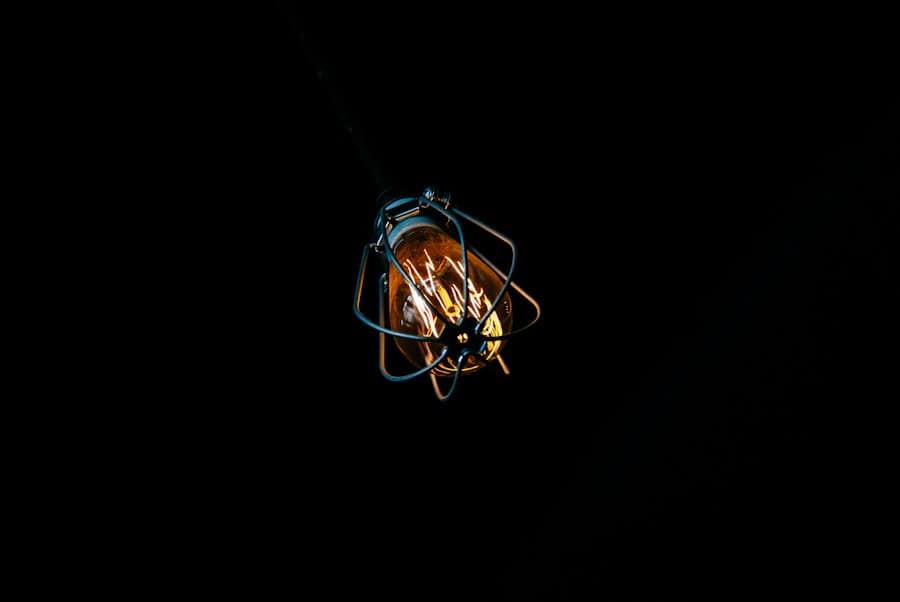Smart lighting systems represent a significant evolution in the way we illuminate our living spaces. These systems utilize advanced technology to provide not just illumination, but also enhanced control, efficiency, and integration with other smart home devices. At their core, smart lighting systems are designed to be more than just a means to light a room; they are an integral part of the broader home automation ecosystem.
By leveraging wireless communication protocols such as Wi-Fi, Zigbee, or Bluetooth, these systems allow users to control their lighting remotely through smartphones, tablets, or voice-activated assistants. The rise of smart lighting can be attributed to the increasing demand for convenience and energy efficiency in modern homes. As technology continues to advance, consumers are seeking solutions that not only enhance their quality of life but also contribute to sustainability efforts.
Smart lighting systems offer a unique blend of functionality and aesthetics, allowing homeowners to create personalized environments that suit their moods and activities. With features such as dimming capabilities, color temperature adjustments, and programmable schedules, smart lighting is transforming the way we think about and interact with light in our homes.
Key Takeaways
- Smart lighting systems use technology to control and automate lighting in homes, offering convenience, energy efficiency, and customization.
- Benefits of smart lighting in home automation include energy savings, convenience, and the ability to create personalized lighting scenes.
- Smart lighting can be integrated with other home automation devices such as smart thermostats, security systems, and voice assistants for a seamless connected home experience.
- Energy efficiency and cost savings are achieved through features such as dimming, scheduling, and motion sensors in smart lighting systems.
- Smart lighting systems offer customization and personalization options, allowing users to create different lighting scenes for different activities and moods.
Benefits of Smart Lighting in Home Automation
One of the primary benefits of smart lighting systems is their ability to enhance the overall home automation experience. By integrating lighting with other smart devices, homeowners can create cohesive environments that respond to their needs. For instance, smart lighting can be programmed to turn on automatically when a user enters a room or adjust based on the time of day.
This level of automation not only adds convenience but also contributes to energy savings by ensuring lights are only on when needed. Moreover, smart lighting systems can significantly improve the ambiance of a home. With the ability to change colors and adjust brightness levels, users can tailor their lighting to match different activities or moods.
For example, a warm, dim light may be ideal for a cozy movie night, while bright white light can enhance focus during work or study sessions. This versatility allows homeowners to create dynamic environments that adapt to their lifestyle, making spaces more enjoyable and functional.
Integration of Smart Lighting with Other Home Automation Devices

The true power of smart lighting systems lies in their ability to integrate seamlessly with other home automation devices. This interconnectedness allows for the creation of complex routines and scenarios that enhance daily living. For instance, a homeowner can set up a “Good Morning” routine that gradually brightens the bedroom lights while simultaneously turning on the coffee maker and adjusting the thermostat to a comfortable temperature.
Additionally, smart lighting can work in conjunction with security systems to enhance safety. For example, when a security camera detects motion outside the home, it can trigger outdoor lights to illuminate the area, deterring potential intruders.
Similarly, homeowners can program their lights to simulate occupancy when they are away, creating the illusion that someone is home and reducing the risk of burglary. This level of integration not only enhances convenience but also provides peace of mind for homeowners concerned about security.
Energy Efficiency and Cost Savings with Smart Lighting
Energy efficiency is one of the most compelling reasons for adopting smart lighting systems. Traditional incandescent bulbs consume a significant amount of energy and have a relatively short lifespan compared to modern LED options. Smart lighting systems typically utilize LED technology, which is not only more energy-efficient but also longer-lasting.
By replacing traditional bulbs with smart LEDs, homeowners can reduce their energy consumption significantly. Moreover, smart lighting systems offer features that further enhance energy savings. For instance, many systems allow users to set schedules for when lights should turn on or off, ensuring that lights are not left on unnecessarily.
Motion sensors can also be integrated into smart lighting setups, automatically turning off lights in unoccupied rooms. These features contribute to lower electricity bills and a reduced carbon footprint, making smart lighting an environmentally friendly choice for conscientious consumers.
Customization and Personalization of Smart Lighting Systems
Customization is a hallmark of smart lighting systems, allowing users to tailor their lighting experiences to their specific preferences and needs. Many smart lighting products come with companion apps that enable users to create personalized settings for different rooms or activities. For example, a user might choose soft blue hues for relaxation in the living room while opting for bright white light in the kitchen for cooking tasks.
This level of personalization enhances the overall living experience by creating environments that resonate with individual tastes. Furthermore, advanced smart lighting systems often support voice control through platforms like Amazon Alexa or Google Assistant. This integration allows users to adjust their lighting simply by speaking commands, adding another layer of convenience and personalization.
This flexibility empowers homeowners to express their creativity and adapt their spaces effortlessly.
Convenience and Ease of Use in Smart Lighting Control

Remote Control and Customization
Users can adjust their lights from anywhere within their home or even remotely when they are away. This capability is particularly useful for those who may forget to turn off lights before leaving or want to create an inviting atmosphere upon returning home.
Versatility in Control Methods
In addition to mobile apps, many smart lighting systems offer compatibility with various control methods, including wall switches and remote controls. This versatility ensures that users can choose the method that best suits their lifestyle.
Enhanced User Experience
For instance, families with children may prefer traditional wall switches for ease of use, while tech-savvy individuals might opt for app-based control or voice commands. The ability to customize control methods enhances user experience and makes smart lighting accessible to everyone.
Security and Safety Features of Smart Lighting Systems
Security is a paramount concern for homeowners, and smart lighting systems play a crucial role in enhancing safety measures around the home. One effective feature is the ability to program outdoor lights to turn on at dusk and off at dawn automatically. This not only provides illumination for pathways and entryways but also deters potential intruders who may be discouraged by well-lit surroundings.
Additionally, many smart lighting systems offer features such as geofencing, which allows lights to turn on or off based on the homeowner’s location. For example, when a user leaves their home, the system can automatically turn off all lights or activate security settings. Conversely, as they approach their home, outdoor lights can illuminate the path ahead, providing both safety and convenience.
These proactive measures contribute significantly to creating a secure living environment.
Future Trends and Innovations in Smart Lighting for Home Automation
As technology continues to evolve, so too does the landscape of smart lighting systems. One emerging trend is the integration of artificial intelligence (AI) into smart lighting solutions. AI-powered systems can learn user preferences over time and make automatic adjustments based on patterns in behavior.
For instance, if a user consistently dims the living room lights at a certain time each evening, an AI system could begin doing this automatically without requiring manual input. Another exciting development is the incorporation of circadian rhythm-based lighting systems that adjust color temperature throughout the day to mimic natural sunlight patterns. This innovation aims to improve well-being by supporting healthy sleep cycles and enhancing mood during waking hours.
As awareness grows regarding the impact of light on health and productivity, such features are likely to become increasingly popular among consumers seeking holistic solutions for their homes. In conclusion, smart lighting systems are revolutionizing how we illuminate our homes by offering unparalleled control, efficiency, and integration with other devices. As technology advances further, we can expect even more innovative features that will enhance our living environments while promoting sustainability and security.
If you are interested in the latest trends in technology, you may also enjoy reading about the top trends on Instagram for 2023. This article explores the upcoming features and changes that are expected to dominate the popular social media platform in the coming year. Just like smart lighting systems are revolutionizing home automation experiences, staying up to date with social media trends can help you enhance your online presence and engagement.
FAQs
What is a smart lighting system?
A smart lighting system is a network of lighting fixtures that can be controlled remotely using a smartphone, tablet, or voice commands. These systems often include features such as dimming, color changing, and scheduling.
How do smart lighting systems improve home automation experiences?
Smart lighting systems improve home automation experiences by allowing users to control their lighting remotely, create custom lighting schedules, and integrate with other smart home devices such as thermostats and security systems.
What are the benefits of using a smart lighting system in a home automation setup?
The benefits of using a smart lighting system in a home automation setup include energy savings, increased convenience, enhanced security, and the ability to create personalized lighting scenes for different activities or moods.
Can smart lighting systems be integrated with voice assistants?
Yes, many smart lighting systems can be integrated with popular voice assistants such as Amazon Alexa, Google Assistant, and Apple HomeKit, allowing users to control their lights using voice commands.
Are smart lighting systems easy to install and use?
Most smart lighting systems are designed to be easy to install and use, with many offering simple setup processes and intuitive mobile apps for controlling the lights. However, some systems may require professional installation for more complex setups.


Add a Comment